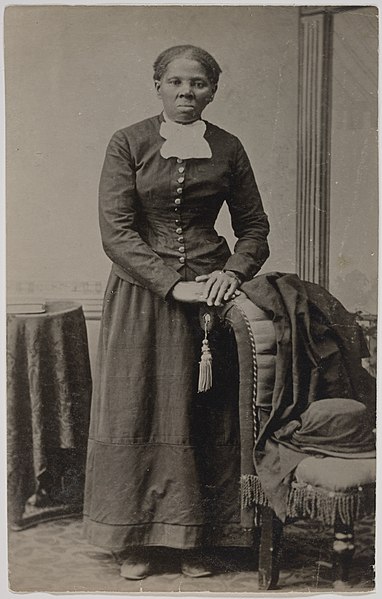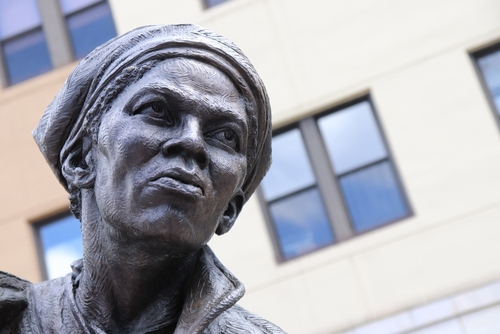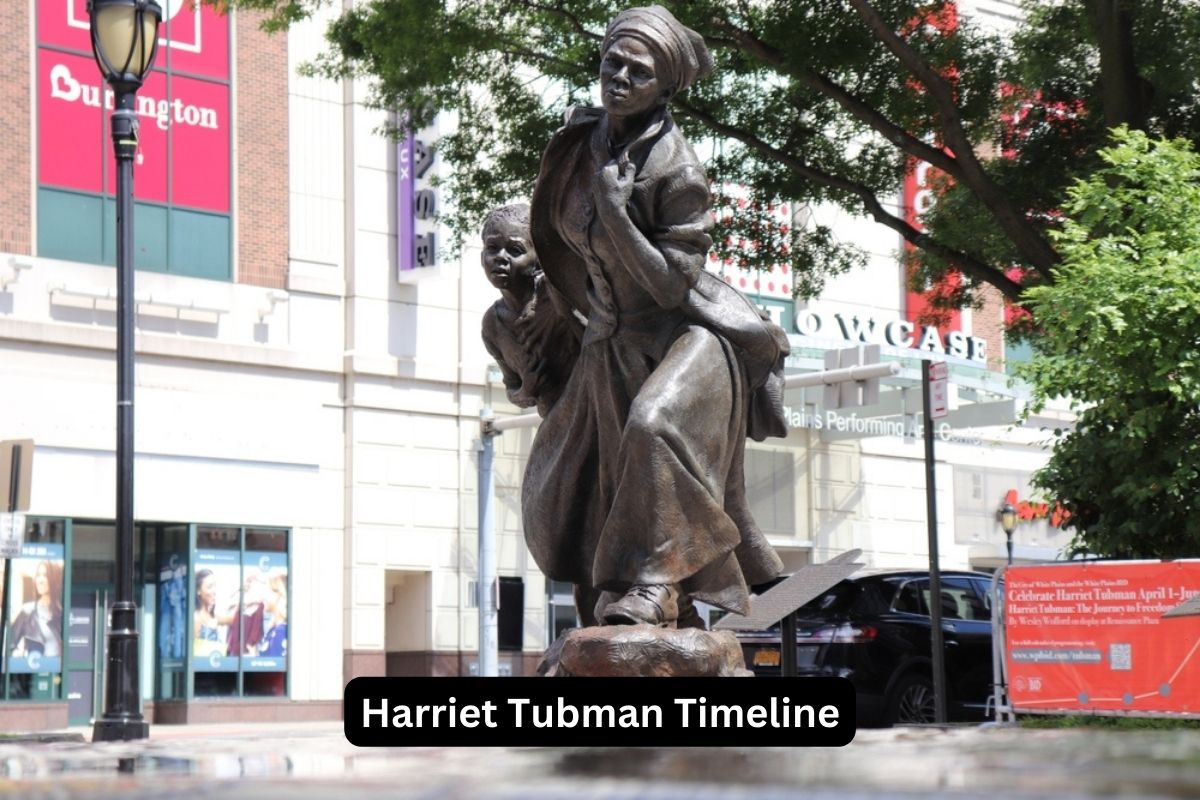Harriet Tubman, born Araminta “Minty” Ross around 1820-1822, was an African-American woman who achieved heroic status through her activities as an abolitionist. She was born into slavery in Dorchester County, Maryland, and faced severe hardship and abuse in her early life.
However, in 1849, Tubman escaped from her enslavement and made her way to Philadelphia. Following her successful escape, she became a “conductor” on the Underground Railroad, a secret network of safe houses and routes used by escaped slaves to reach free territories.
Over the next decade, she made approximately 13 trips back to the South, rescuing around 70 enslaved individuals, including members of her own family.
When the Civil War broke out, Tubman supported the Union forces, serving as a cook, nurse, armed scout, and spy. After the war, she became a proponent for women’s suffrage and established a home for elderly African Americans.
Her life and accomplishments remain symbols of courage, freedom, and advocacy. Harriet Tubman passed away in 1913, leaving a legacy that continues to inspire today.
| Year | Event |
|---|---|
| 1820-1822 | Harriet Tubman, originally named Araminta “Minty” Ross, is born into slavery in Dorchester County, Maryland. |
| 1825 | Harriet begins working as a nursemaid for the plantation’s baby. |
| 1835 | Suffers a severe head injury when a slave overseer throws a two-pound metal weight, intending to hit another slave, but hitting Tubman instead. |
| 1844 | Marries John Tubman, a free black man. |
| 1849 | After her master’s death, fearing she will be sold, Harriet decides to escape. |
| 1849 | Harriet Tubman successfully escapes from slavery, traveling nearly 90 miles to Philadelphia. |
| 1850 | After the passage of the Fugitive Slave Act, Tubman becomes involved in the Underground Railroad, an elaborate secret network of safe houses organized for that purpose. |
| 1850-1860 | Makes approximately 13 missions to rescue around 70 enslaved people, including family and friends, using the network of antislavery activists and safe houses known as the Underground Railroad. |
| 1851 | Rescues her brother James and other family members in her second mission. |
| 1857 | Rescues her parents in one of her most challenging missions. |
| 1861-1865 | During the Civil War, Tubman works for the Union Army as a cook, nurse, armed scout, and spy. She becomes the first woman to lead an armed expedition in the war, guiding the Combahee River Raid which liberated more than 700 slaves in South Carolina. |
| 1869 | Harriet Tubman marries Nelson Davis, a Civil War veteran. |
| 1869 | Sarah Bradford writes a biography about Tubman called “Scenes in the Life of Harriet Tubman”. |
| 1874 | Harriet and her husband Nelson Davis adopt a baby girl named Gertie. |
| 1896 | Tubman purchases property in Auburn, New York, for the Harriet Tubman Home for Aged and Indigent Colored People. |
| 1908 | The Harriet Tubman Home for the Aged opens in Auburn, New York. |
| 1911 | Tubman’s health declines, and she moves into the rest home named in her honor. |
| 1913 | Harriet Tubman dies of pneumonia. She is buried with military honors at Fort Hill Cemetery in Auburn, New York. |
Timeline of Harriet Tubman
1820-1822 – Born into slavery in Maryland
Harriet Tubman, originally named Araminta “Minty” Ross, was born into slavery in Dorchester County, Maryland.
Also Read: Harriet Tubman Accomplishments
Her exact birthdate is not known but is estimated to be between 1820 and 1822. Her parents, Harriet “Rit” Green and Ben Ross, were both enslaved people. Harriet was one of nine children.

1825 – Begins work as a nursemaid
At around the age of five or six, Harriet began working as a nursemaid. She was responsible for taking care of a white plantation owner’s baby.
Also Read: Harriet Tubman Facts
Part of her duty was to prevent the baby from crying, and if she failed, she was whipped. This early experience marked the beginning of a life filled with hard labor and physical suffering.
1835 – Suffers severe head injury
Around the age of 12 or 13, Tubman suffered a severe head injury when an overseer threw a two-pound metal weight intending to hit another slave. The weight hit Tubman instead, causing a serious head wound.
The injury resulted in Tubman experiencing bouts of narcolepsy and severe headaches throughout her life. These episodes, often described as visions or premonitions, also influenced her religious beliefs and conviction that she was guided by a divine power.
1844 – Marries John Tubman
In 1844, Harriet married John Tubman, a free black man. This marriage did not change her status as a slave because according to the laws at that time, the children of an enslaved woman would also be slaves, regardless of their father’s status. During her marriage to John, she changed her first name from Araminta to Harriet.
1849 – Escapes from slavery, travels to Philadelphia
In 1849, following the death of her owner and fears that she and other slaves on the plantation would be sold, Harriet decided to escape.
Leaving her husband behind, who refused to leave, Tubman followed the North Star and used the Underground Railroad—a network of secret routes and safe houses used by slaves to escape into free states and Canada. After a nearly 90-mile journey, she reached Philadelphia and tasted freedom for the first time.

1850 – Becomes involved in the Underground Railroad
After the passage of the Fugitive Slave Act in 1850, which made it legal for bounty hunters to capture escaped slaves in any state, Harriet Tubman joined the Underground Railroad.
The Underground Railroad was a network of safe houses and routes used by escaping slaves to reach free territories in the North or Canada. As a “conductor,” Tubman made perilous trips to the South to guide enslaved people to freedom.
1850-1860 – Conducts approximately 13 missions, rescuing around 70 enslaved people
Over this decade, Tubman made around 13 trips to the South and helped about 70 slaves to escape, earning her the nickname “Moses”. Her knowledge of covert travel routes, survival techniques, and the sheer boldness of her actions made her an effective conductor.
Her missions were dangerous, especially after the Fugitive Slave Act of 1850, which made escaped slaves liable to recapture even in the free Northern states.
1851 – Rescues her brother James
In one of her first rescue missions, Tubman returned to Maryland to free her brother James and other family members.
She was often strategic about the timing of her operations, usually executing them in winter when nights were longer and people were less likely to leave their homes, and on Saturdays, as it provided a longer head start before the sale of slaves was advertised in the Monday newspapers.
1857 – Rescues her parents
In one of her most daring missions, Tubman rescued her elderly parents. They had been freed by their former owner’s will, but a court challenge had left them vulnerable.
Tubman brought them to St. Catharines, Ontario, where she had settled in the mid-1850s, before later moving them to Auburn, New York, after the Civil War.
1861-1865 – Serves the Union Army as a cook, nurse, armed scout, and spy during the Civil War
With the outbreak of the Civil War, Tubman saw a Union victory as a key step towards the abolition of slavery. She offered her services and worked for the Union forces as a cook, a nurse, and even a spy. She also acted as an armed scout and was involved in guerrilla activities.
1869 – Marries Nelson Davis
In 1869, Tubman married a Civil War veteran named Nelson Davis, who was over 20 years her junior. He had been a private in the 8th United States Colored Infantry, and they had met during the war.
Davis had settled in Auburn, New York, and worked there as a bricklayer. Despite their age difference, they reportedly had a good and loving marriage. Davis died in 1888, leaving Tubman a widow for the second time.
1869 – “Scenes in the Life of Harriet Tubman”, a biography, is published
In 1869, Sarah Hopkins Bradford, a writer from New York, published a biography of Harriet Tubman titled “Scenes in the Life of Harriet Tubman”.
The book provided an account of Tubman’s heroic activities as a conductor on the Underground Railroad and her service during the Civil War. The biography helped Tubman gain recognition and provided her with some financial relief.
1874 – Adopts a baby girl named Gertie
In 1874, Tubman and her husband Nelson Davis adopted a baby girl named Gertie. The couple took care of Gertie and provided her with the family life that Harriet was denied when she was a child.
1896 – Purchases property for the Harriet Tubman Home for Aged and Indigent Colored People
As Tubman grew older, she became concerned about the welfare of elderly and needy people in the African American community.
She purchased land near her home in Auburn, New York, to establish the Harriet Tubman Home for Aged and Indigent Colored People. Her vision was to create a space where African Americans could age with dignity and care.
1908 – The Harriet Tubman Home for the Aged opens
After years of fundraising and public appeals, Tubman’s dream was realized when the Harriet Tubman Home for the Aged opened in 1908. It provided a place where elderly African Americans could live out their remaining years in comfort and respect.
1911 – Moves into the rest home named in her honor due to declining health
In 1911, due to her declining health, Tubman moved into the home she had established. She spent her remaining years in the institution she had worked so hard to build, receiving the same care and compassion she had shown to others throughout her life.
1913 – Dies of pneumonia and is buried with military honors
She passed away from pneumonia in 1913. In recognition of her service during the Civil War, she was buried with military honors at Fort Hill Cemetery in Auburn, New York.
Harriet Tubman’s life of courage, sacrifice, and advocacy continues to inspire generations and her legacy is commemorated in numerous ways, including national historical parks and monuments.
